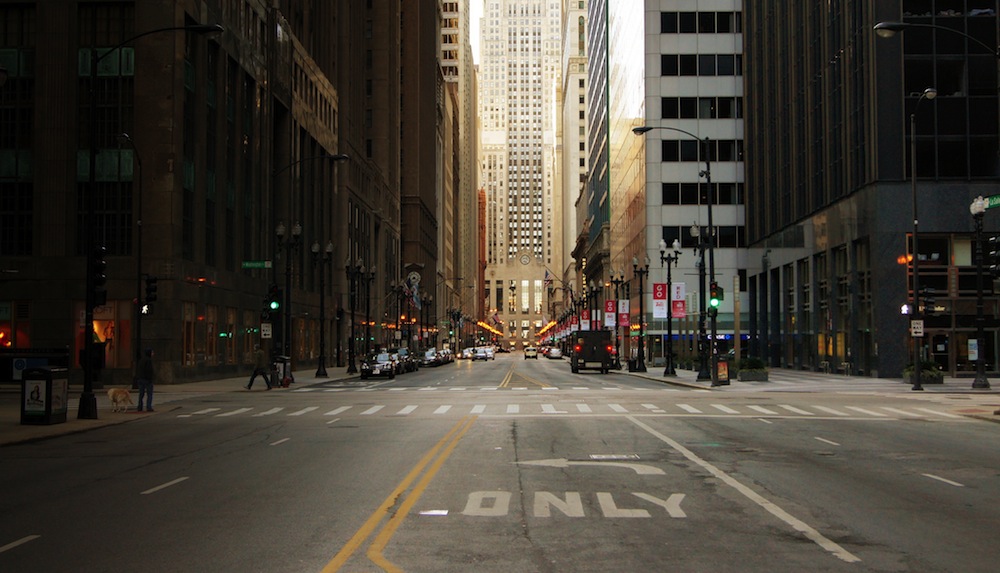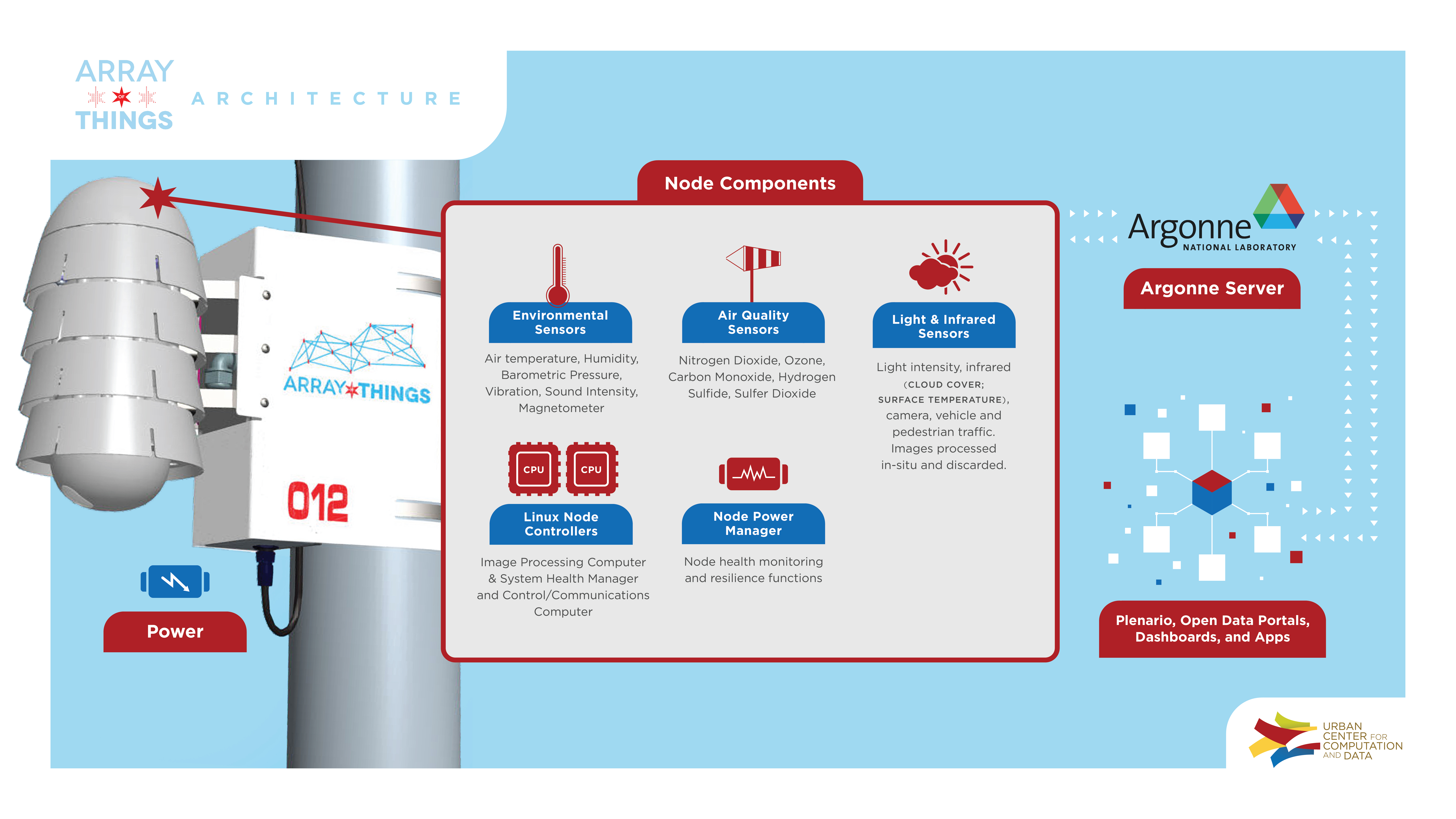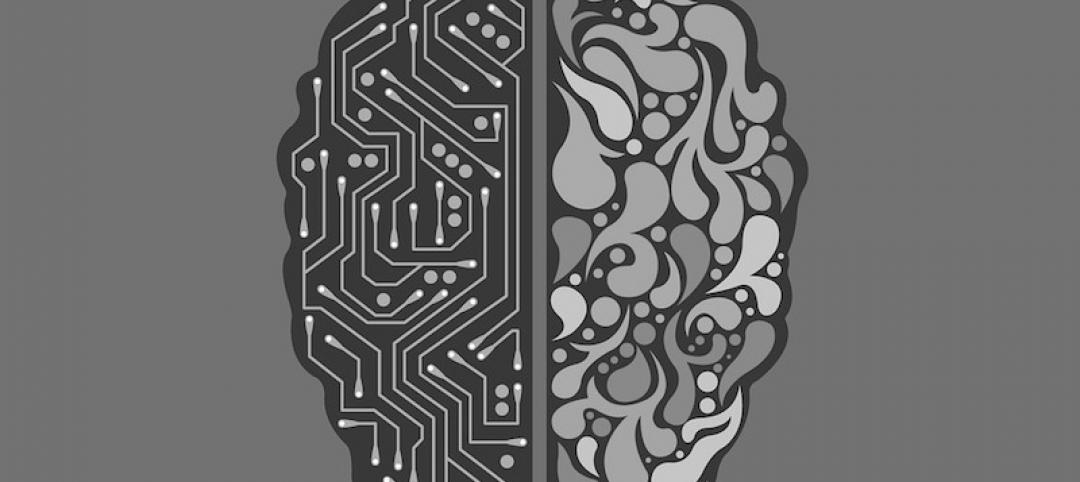Chicago will install 50 location-based sensor devices around the city this July and August, and 450 more by the end of 2018.
The Chicago Tribune reports that the project, named the Array of Things, will track temperature, air quality, light, and traffic data in an effort to improve city life conditions.
Sensors will be installed into streetlight traffic signal poles in both the downtown Loop and an undecided neighborhood. The devices will be concentrated in areas that need further specific problems, like air quality and fluctuating temperatures, examined.
The project, a collaboration between University of Chicago, Argonne National Laboratory and the School of the Art Institute of Chicago, received a $3.1 million grant from the National Science Foundation in September last year.
Alpha prototype sitting in @cec's office ready to go to CDOT electricians for a test install. pic.twitter.com/0gsDvVlVsB
— Array of Things (@arrayofthings) February 18, 2016
Data from the project will be released to the public via Chicago's Open Data platform a few months after the first sensors are installed. All software, hardware, parts, and specifications will be published as open source.
The Array of Things website says that the technology will serve as a “fitness tracker” for Chicago, allowing residents to monitor exposure to air pollutants and find the least congested travel routes.
“The data will help make Chicago a truly ‘smart city,’ allowing the City to operate more efficiently and realize cost savings by anticipating and proactively addressing potential problems like urban flooding,” the website says.
Amid privacy concerns, the Array of Things says it will not collect any personal or private user information.
Related Stories
Big Data | Aug 23, 2018
Data driven design: The benefits of building energy modeling
As technology advances, Building Energy Modeling (BEM) is becoming an even more powerful tool for making informed design decisions. This is the first post in our series examining the benefits of BEM in balancing occupant comfort and design features with energy efficiency.
BIM and Information Technology | Jul 2, 2018
Data, Dynamo, and design iteration
We’re well into the digital era of architecture which favors processes that have a better innovation cycle.
Accelerate Live! | Jun 24, 2018
Watch all 19 Accelerate Live! talks on demand
BD+C’s second annual Accelerate Live! AEC innovation conference (May 10, 2018, Chicago) featured talks on AI for construction scheduling, regenerative design, the micro-buildings movement, post-occupancy evaluation, predictive visual data analytics, digital fabrication, and more. Take in all 19 talks on demand.
Market Data | Jun 18, 2018
AI is the path to maximum profitability for retail and FMCG firms
Leading retailers including Amazon, Alibaba, Lowe’s and Tesco are developing their own AI solutions for automation, analytics and robotics use cases.
| Jun 11, 2018
Accelerate Live! talk: ‘AEC can has Blockchains?’
In this 15-minute talk at BD+C’s Accelerate Live! conference (May 10, 2018, Chicago), HOK’s Greg Schleusner explores how the AEC industry could adapt the best ideas from other industries (banking, manufacturing, tech) to modernize inefficient design and construction processes.
| May 30, 2018
Accelerate Live! talk: Seven technologies that restore glory to the master builder
In this 15-minute talk at BD+C’s Accelerate Live! conference (May 10, 2018, Chicago), AEC technophile Rohit Arora outlines emerging innovations that are poised to transform how we design and build structures in the near future.
Big Data | Jan 5, 2018
In the age of data-driven design, has POE’s time finally come?
At a time when research- and data-based methods are playing a larger role in architecture, there remains a surprisingly scant amount of post-occupancy research. But that’s starting to change.
Green | Dec 22, 2017
Green builders can use ‘big data’ to make design decisions
More and more, green project teams are relying on publicly available “external datasets” to prioritize sustainable design decisions, says sustainability consultant Adele Houghton.
Reconstruction & Renovation | Dec 21, 2017
Interactive map includes detailed information on historic New York City buildings
The New York City Landmarks Preservation Commission launched a new, enhanced version of its interactive map, Discover NYC Landmarks.
AEC Tech | Oct 6, 2017
How professional bias can sabotage industry transformation
Professional bias can take the form of change-resistant thinking that can keep transformational or innovative ambitions at bay. Tech consultant Nate Miller presents three kinds of bias that often emerge when a professional is confronted with new technology.
















